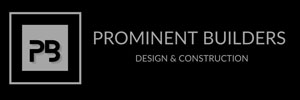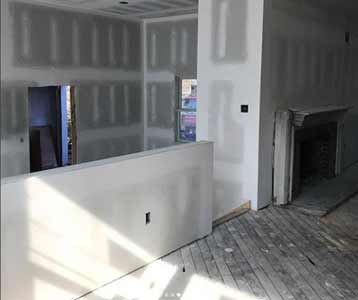In April, we began a series of blogs on the new home construction process from beginning to end. Our series has covered the topics of Floor Plan Choices When Building a Custom Home, New Home Foundations – The Important Things to Know, and The Framing Stage of New Home Construction. In this month’s blog, we focus on the main tasks leading up to the drywall stage and the drywall process.
Prior to Drywall
Before the drywall goes in, there are several important steps to complete to ready the home. These include the following:
Closing in the Home from the Outside Environment
Once your new home is framed and the roof is intact, the home should be closed off from the elements with any exterior doors and windows. It is important to close off the home to begin drying it out from moisture and creating a stable temperature environment before any drywall, ductwork, plumbing, or electrical work is completed.
Electrical, Plumbing, and HVAC
Now that your home is closed in from the outside environment, critical work begins on laying your electrical wiring, adding your plumbing, and installing the HVAC ductwork. These three items may happen simultaneously, or you may see one before the other based on the availability of the construction trades.
- You will begin to see the wiring being added into the walls and rough ins for the wall outlets.
- Pipes are placed into the walls throughout the home to prepare for the plumbing.
- Duct work and rough ins for registers will also be added into the ceilings and the attic to prepare for your heating and cooling system.
Depending on the building codes, each of these items will be required to pass specific inspections. Your home construction consultant will work directly with the inspectors to ensure that these items adhere to all the building codes and are ready to move on in the process. Drywall cannot happen until all inspections are cleared.
Important Tip: A helpful tip that may help you later is to carefully photograph all the electrical and plumbing prior to drywall. Go around the home and take pictures of the wiring in the walls and the pipes. Keep notes associated with your photos so that in the event you want to do something later once the home is complete, you have a record of where specific wiring or pipes are in the walls.
The Drywall Process
Once the necessary inspections are completed, it is time to begin the drywalling.
To help you to know what to expect, we explain the key steps in this process:
- Drywall materials are usually stored in a dry environment and given time to adjust to the room temperature.
- You may hear the drywall referred to as “plasterboard”, “Sheetrock”, or gypsum. Drywall is typically a ½ inch thick layer of plaster, which is sandwiched between heavy paper.
- Drywall is nailed to the framing on the walls and ceilings. The installer will use a nail gun to secure the drywall material to the framing throughout the home.
- Once the installation is completed, the drywaller will apply tape over the seams, any cracks in the materials, and cover the nail holes with a type of spackling compound.
- Drywalling is a quick process, especially if there are several installers working at once.
- Drywalling is a dusty process, so it is important that the construction site is cleaned of plaster dust before working on the next stages of the home.
Once this process is complete, you have reached a major milestone in the home construction process. Your home now takes on shape and form and hopefully you will begin to have greater vision of what it will look like when it is completed.
In next month’s blog post, we will continue our series with a look at the tasks that now begin to add the various finishes to the home, including cabinetry, flooring, and paint.
If you would like to learn more about custom new home construction, reach out to a consultant at Prominent Builders and Design today to schedule an appointment.

